-
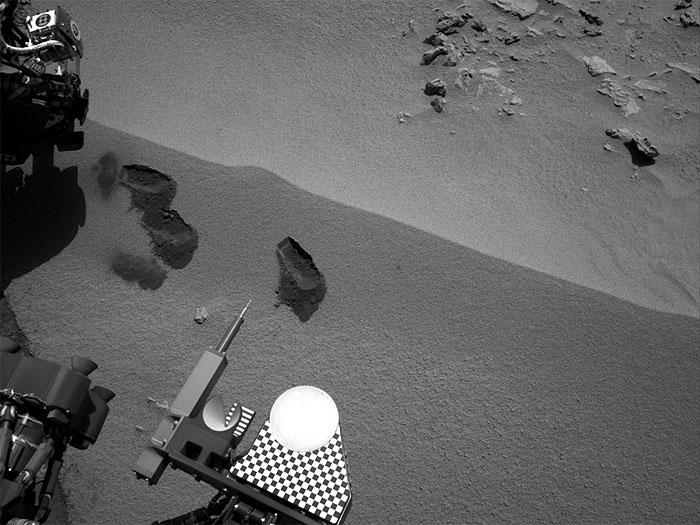
Curiosity's First Three Bites Into Martian Ground
Three bite marks left in the Martian ground by the scoop on the robotic arm of NASA's Mars rover Curiosity are visible in this image taken by the rover's right Navigation Camera during the mission's 69th Martian day, or sol (Oct. 15, 2012). The third scoopful, collected on that sol, left the bite or pit farthest to the right. Each of the three bites is about 2 inches (5 centimeters) wide.
Of the two bites to the left, the lower one is where Curiosity collected its first scoopful of Martian material, on Sol 61 (Oct. 7, 2012). The upper one is the site of the second scooping, on Sol 66 (Oct. 12, 2012). The location for all of these scoops, and two more planned, is a ripple of windblown dust and sand at a location called "Rocknest."
The bright circular part of the rover near the bottom center of this image is the observation tray, which is 3 inches (7.8 centimeters) in diameter.
-
Mission Status Report
PASADENA, Calif. -- NASA's Mars rover Curiosity has ingested its first solid sample into an analytical instrument inside the rover, a capability at the core of the two-year mission.
The rover's Chemistry and Mineralogy (CheMin) instrument is analyzing this sample to determine what minerals it contains.
"We are crossing a significant threshold for this mission by using CheMin on its first sample," said Curiosity's project scientist, John Grotzinger of the California Institute of Technology in Pasadena. "This instrument gives us a more definitive mineral-identifying method than ever before used on Mars: X-ray diffraction. Confidently identifying minerals is important because minerals record the environmental conditions under which they form."
The sample is a sieved portion -- about as much material as in a baby aspirin -- from the third scoop collected by Curiosity as a windblown patch of dusty sand called "Rocknest." The rover's robotic arm delivered the sample to CheMin's opened inlet funnel on the rover's deck on Oct. 17.
The previous day, the rover shook the scooped material inside sample-processing chambers to scrub internal surfaces of any residue carried from Earth. One earlier scoopful was also used for cleaning. Additional repetitions of this cleaning method will be used before delivery of a future sample to the rover's other internal analytic instrument, the Sample Analysis at Mars investigation, which studies samples' chemistry.
Various small bits of light-toned material on the ground at Rocknest have affected the rover's activities in the past several days. One piece about half an inch (1.3 centimeters) long was noticed on Oct. 7. The rover team postponed use of the robotic arm for two days while investigating this object, and assessed it to be debris from the spacecraft.
Images taken after Curiosity collected its second scoop of Rocknest material on Oct. 12 showed smaller bits of light-toned material in the hole dug by the scooping action. This led to discarding that scoopful rather than using it to scrub the processing mechanisms. Scientists assess these smaller, bright particles to be native Martian material, not from the spacecraft.
"We plan to learn more both about the spacecraft material and about the smaller, bright particles," said Curiosity Project Manager Richard Cook of NASA's Jet Propulsion Laboratory, Pasadena. "We will finish determining whether the spacecraft material warrants concern during future operations. The native Mars particles become fodder for the mission's scientific studies."
-

First Sample Placed on Curiosity's Observation Tray
The robotic arm on NASA's Mars rover Curiosity delivered a sample of Martian soil to the rover's observation tray for the first time during the mission's 70th Martian day, or sol (Oct. 16, 2012). This image taken later that same sol by the rover's left Mast Camera shows the sample on the tray. The tray is 3 inches (7.8 centimeters) in diameter.
The sample came from the third scoopful of material collected at the "Rocknest" patch of windblown dust and sand.
-
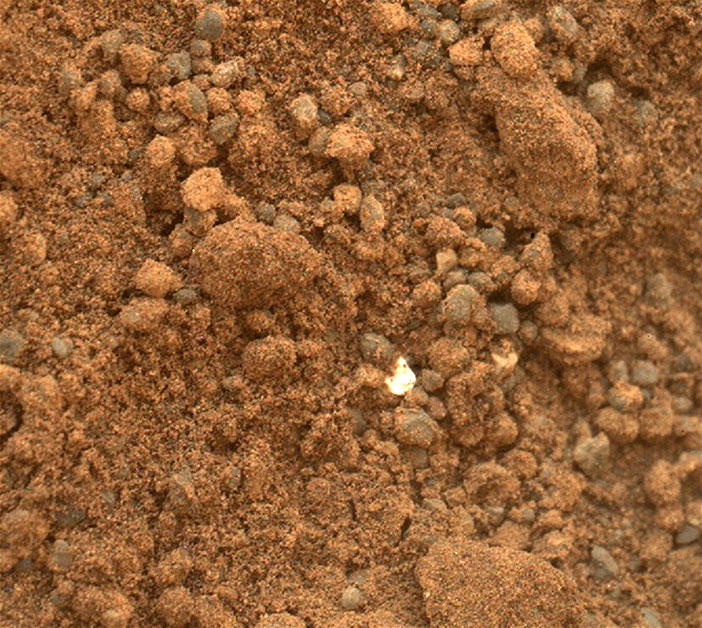
Bright Particle in Hole Dug by Scooping of Martian Soil
This image shows part of the small pit or bite created when NASA's Mars rover Curiosity collected its second scoop of Martian soil at a sandy patch called "Rocknest." The bright particle near the center of this image, and similar ones elsewhere in the pit, prompted concern because a small, light-toned shred of debris from the spacecraft had been observed previously nearby (PIA16230). However, the mission's science team assessed the bright particles in this scooped pit to be native Martian material rather than spacecraft debris.
This image was taken by the Mars Hand Lens Imager (MAHLI) camera on Curiosity's arm during the 69th Martian day, or sol, of the mission (Oct. 15, 2012), about a week after the scoop dug this hole. The view here covers an area of ground about 1.6 inches (4 centimeters) across.
-
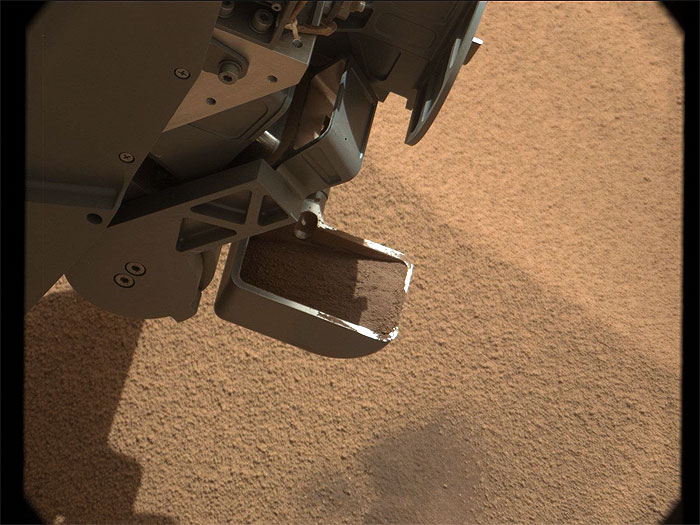
This image was taken by Mastcam: Right (MAST_RIGHT) onboard NASA's Mars rover Curiosity on Sol 69 (2012-10-16 00:42:00 UTC) .
-
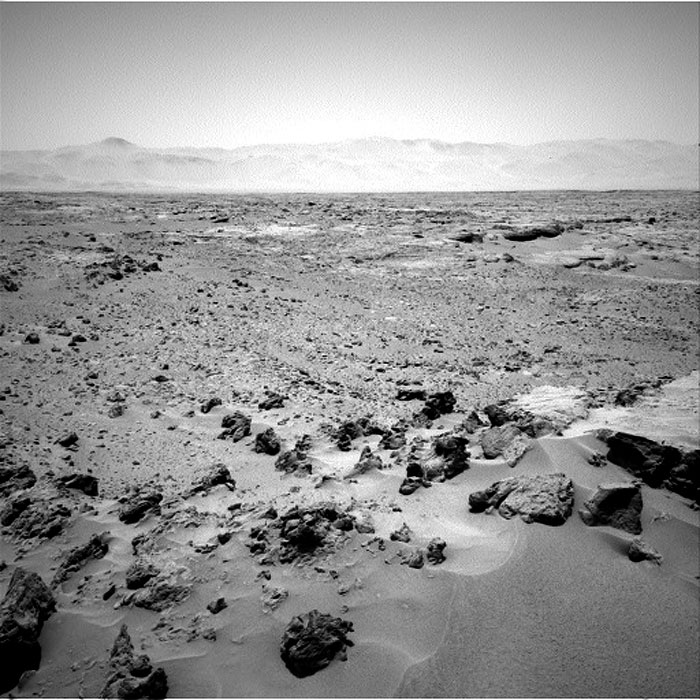
This image was taken by Navcam: Left A (NAV_LEFT_A) onboard NASA's Mars rover Curiosity on Sol 69 (2012-10-15 23:07:52 UTC) .
-
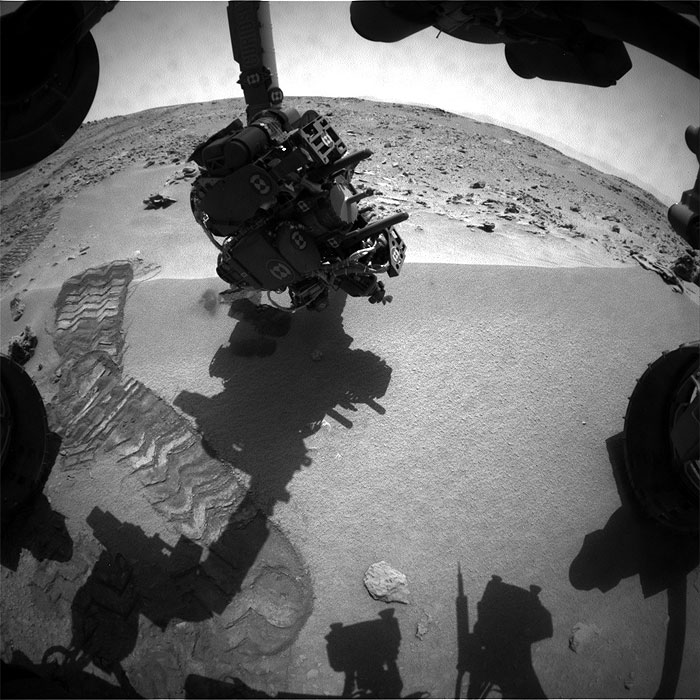
This image was taken by Front Hazcam: Right A (FHAZ_RIGHT_A) onboard NASA's Mars rover Curiosity on Sol 69 (2012-10-16 00:06:49 UTC) .
-
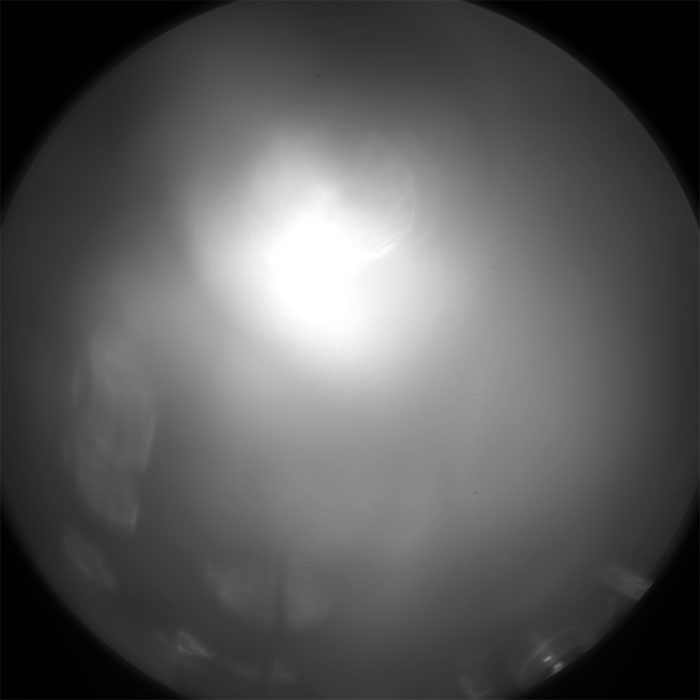
his image was taken by ChemCam: Remote Micro-Imager (CHEMCAM_RMI) onboard NASA's Mars rover Curiosity on Sol 70 (2012-10-16 21:10:47 UTC) .
-
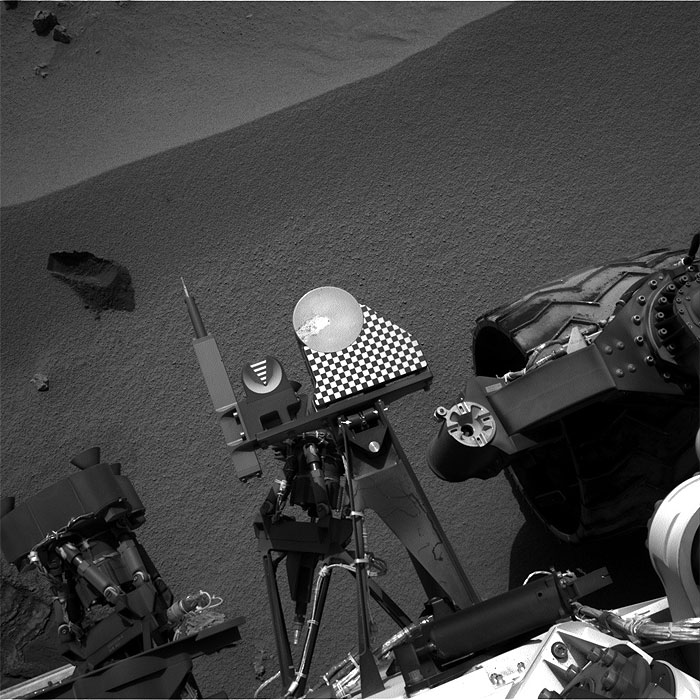
This image was taken by Navcam: Left A (NAV_LEFT_A) onboard NASA's Mars rover Curiosity on Sol 70 (2012-10-17 02:10:19 UTC) .
-
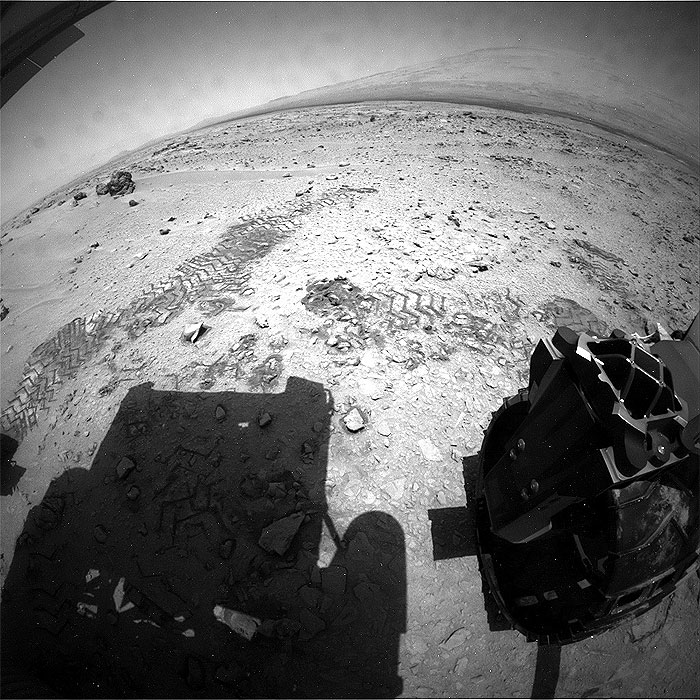
This image was taken by Rear Hazcam: Right A (RHAZ_RIGHT_A) onboard NASA's Mars rover Curiosity on Sol 70 (2012-10-16 23:54:19 UTC) .
-
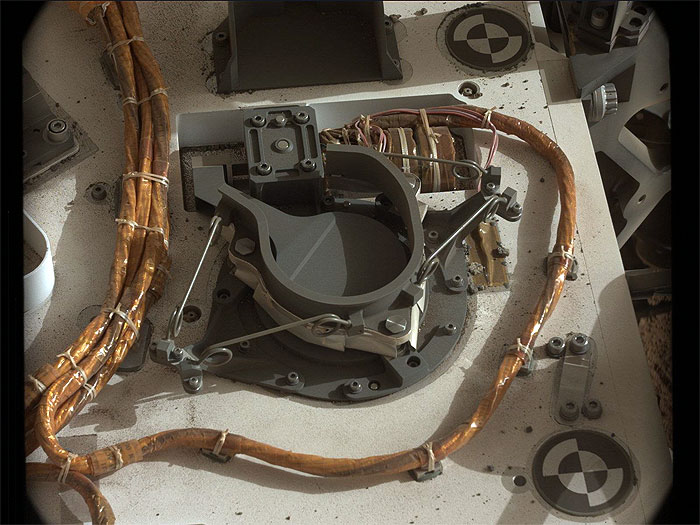
This image was taken by Mastcam: Left (MAST_LEFT) onboard NASA's Mars rover Curiosity on Sol 71 (2012-10-18 04:29:02 UTC) .
-
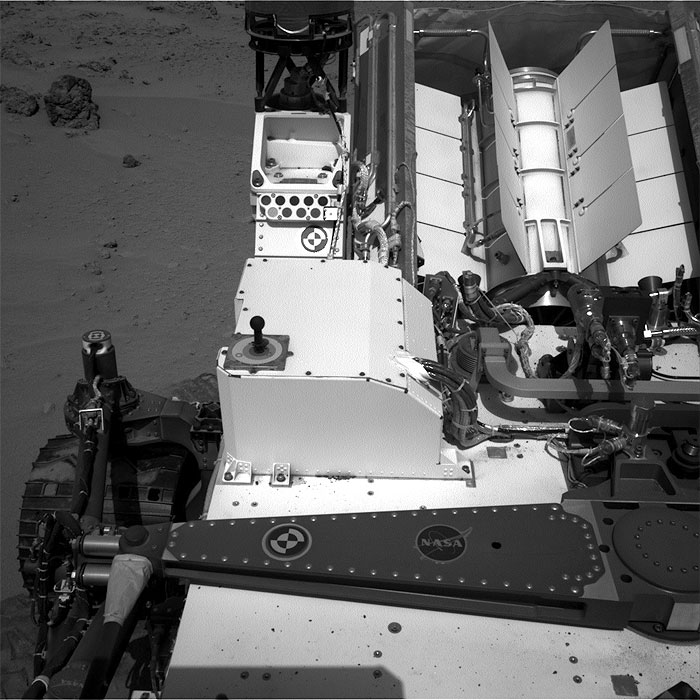
This image was taken by Navcam: Right A (NAV_RIGHT_A) onboard NASA's Mars rover Curiosity on Sol 71 (2012-10-18 01:57:51 UTC) .
-

This image was taken by ChemCam: Remote Micro-Imager (CHEMCAM_RMI) onboard NASA's Mars rover Curiosity on Sol 72 (2012-10-19 01:24:04 UTC) .
-
Fotos: NASA
5117 Views

